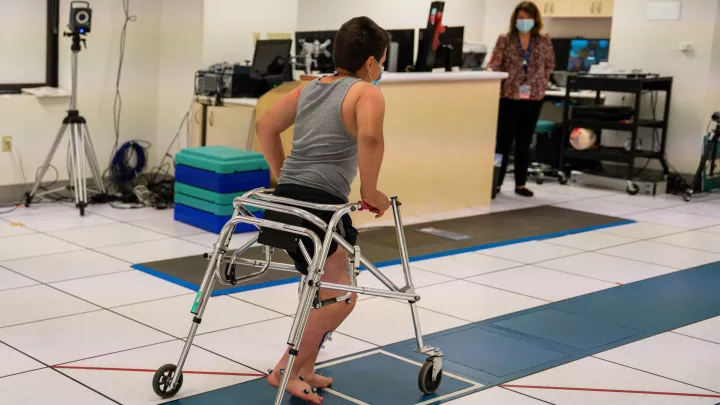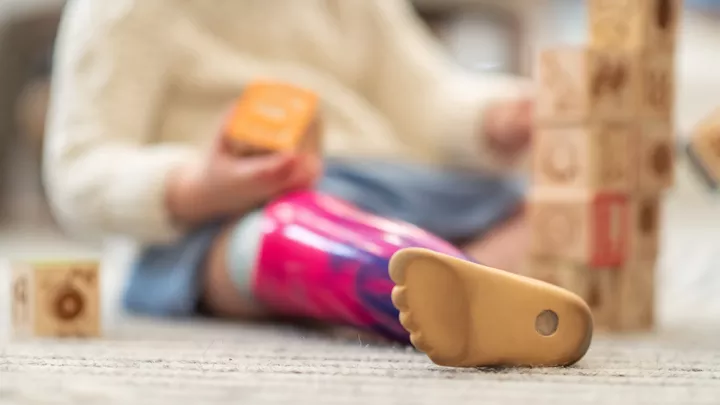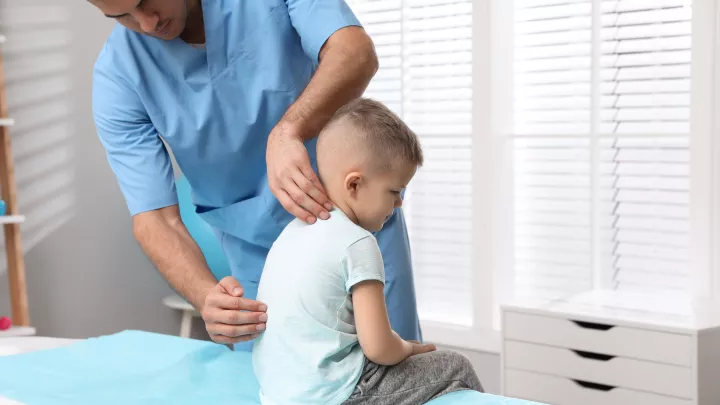
Fracture Risk Is Low After Femoral Osteotomy in Children With Cerebral Palsy
Proximal femoral osteotomy is a common surgery to correct displaced hips in children with cerebral palsy. But how many of these children go on to develop a periprosthetic fracture (a broken bone near the metal implants used in the procedure)? And which patients are at the greatest risk?
A team from the Jackie and Gene Autry Orthopedic Center at Children’s Hospital Los Angeles recently conducted a retrospective study of 350 patients at CHLA to answer these questions. The study found that the periprosthetic fracture rate for these children is 2.2%, or 1 in 50 patients.
The findings—which were presented at the American Academy for Cerebral Palsy and Developmental Medicine Annual Meeting, held Sept. 10-13 in Chicago—suggest that surgeons do not need to proactively remove metal implants after a femoral osteotomy.
“A 2% risk of fracture doesn’t support the routine, prophylactic removal of implants in these children,” says Robert Kay, MD, Director of the Autry Orthopedic Center at CHLA, who presented the results. “Many of these patients are medically fragile, and the risks of another surgery to remove the implants likely outweigh the risk of a fracture.”
A conservative approach
The study included 350 patients who underwent femoral osteotomy at Children’s Hospital Los Angeles between 2002 and 2022. Because many patients need the surgery on both hips, the study included 645 implants. CHLA—which is home to the largest Pediatric Orthopedic Neuromuscular Program on the West Coast—performs roughly 100 of these procedures each year.

During the surgery, a small piece of the femur bone is removed to better align the bone into the hip socket. Metal plates and screws serve as an internal cast to maintain this new alignment. But after the bone has healed, the implants are no longer needed.
Because it’s known that fractures can later occur near the plates, surgeons at some institutions routinely do a second operation to remove the implants. Other centers, including Children’s Hospital Los Angeles, take a more conservative approach—removing the plates only if they are causing a problem or if the child is undergoing surgery for another reason.
The low risk found in the study—only 14 patients experienced a fracture out of the 645 implants during that time period—supports a conservative approach, Dr. Kay says.
“The more surgeries these children have, the more risk they are exposed to in terms of anesthesia, infections and other complications,” he adds. “We don’t think it’s worth putting them through an extra operation if only 1 in 50 kids are fracturing next to their implant. The risk of complications from taking out the plates is actually significantly higher than the 2% risk of fracture.”
Implant size matters
The team also investigated which children were at highest risk of fracture, with the findings revealing potential ways that surgeons can lower that 2% risk even further.
The researchers found that:
The smallest children, with the smallest implants, had the greatest fracture risk. Children with so-called infant plates had a 3.1% risk of fracture, while the rest of the patients in the study had a 1.6% risk. This means that even when choosing the smallest implants possible, very small children still have a higher risk of fracture.
“It sounds counterintuitive, but the patients’ bones are so tiny, that even though you’re putting in a very small plate, the plate is still relatively large compared to the bone,” he explains.
- For other children, the smallest size plates were linked to lower fracture rates. “A larger plate is stiffer and not as flexible,” Dr. Kay notes. “It’s important to match the implant size to the child size, and use the smallest plate you can to heal the osteotomy.”
- Patients at Gross Motor Function Classification System (GMFCS) levels IV and V had similar fracture rates. Although these patients—who have the most severe motor impairments—had a higher fracture rate than those at GMFCS level III, there was no statistically significant difference in fracture rates between patients at levels IV and V. These data contradict conventional wisdom that the children functioning at GMFCS level V have higher risks due to their overall medical status and osteopenia.
- Most fractures occurred within three years of surgery. In addition, no fractures occurred more than eight years after the surgery. Although the study’s average follow-up time was 5.4 years, many patients were followed for up to 15 years.
Next steps
The team is now using the same large cohort of patients to investigate all risk factors for reoperation after femoral osteotomy—not just periprosthetic fracture. Researchers are looking at the importance of several factors, including GMFCS level, timing of the procedure and more.
“These children typically need multiple surgeries,” Dr. Kay says. “Our goal is to continue to optimize these procedures the best we can to minimize risk and additional operations for the child.”
Study authors were Sam Wimmer, Tishya Wren, Susan Rethlefsen, Oussama Abousamra and Robert Kay.


